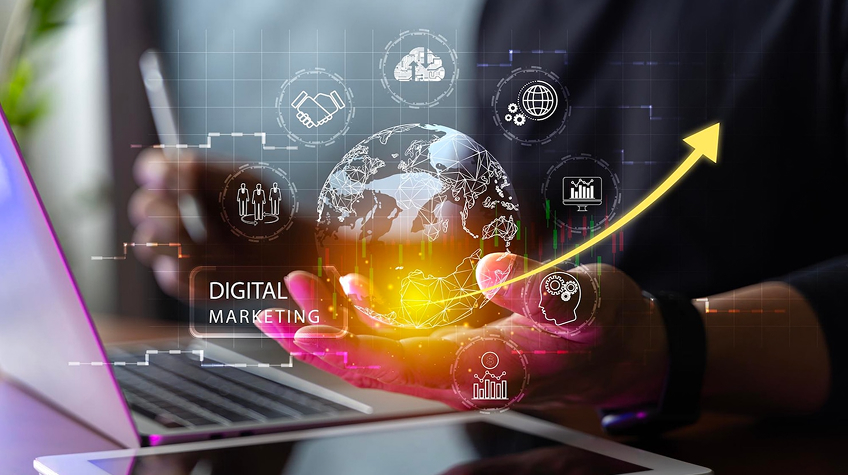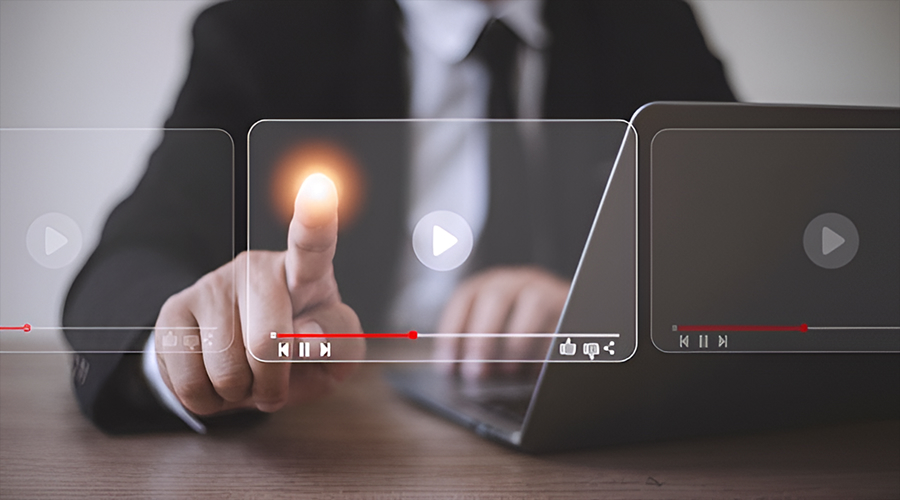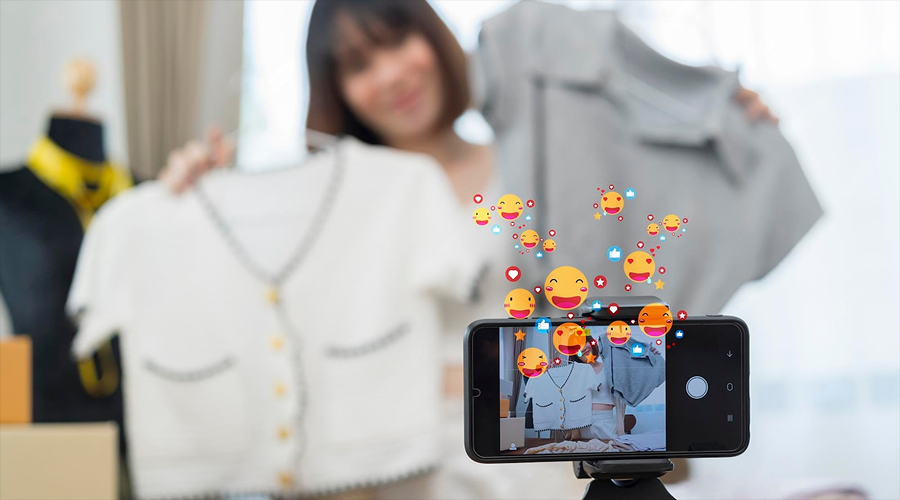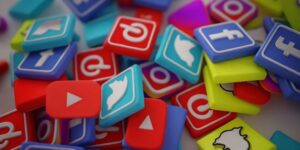
The world of digital marketing is set to experience a huge change. 2026 is looking like a milestone year with AI, personalisation, and consumer behaviour of the new age continuing to change the way brands interact with audiences. In this blog, let’s understand what trends, tools and techniques will shape the marketing future and how companies can prepare to face the next.
The world of digital marketing is dynamic. What was working yesterday may not be suitable today. Algorithms change, consumers are changing, and new platforms are emerging at a faster pace than ever. The rate of change in 2026 will be a bit confusing, but exciting.
Privacy rules are getting tougher, and marketers need to build trust by being open and asking for permission. Brands aren’t just selling anymore. They’re building communities, creating experiences, and promoting emotional bonds, all backed by data and clever thinking.
Artificial intelligence, immersive technologies, and hyper-personalisation are no longer concepts of the future. They’re trending now and are changing how we connect. Now, let’s uncover what 2026 has in store and how smart marketers are getting ready for it.
Digital Marketing Sector in 2026: Key Trends
1. AI Becomes the Heartbeat of Marketing

In 2026, AI will not only be helpful to marketers, but it will also run digital marketing campaigns. AI applications are currently creating smart ad copy, forecasting consumer intent, and personalising customer experience with accuracy.
Consider campaigns that adapt to the user’s emotions, behaviours or even tone of voice in real time as they attend to one another. It is no longer science fiction. Google Ads and Meta platforms are already using AI to learn new targeting based on each click and scroll. This will be next-level in 2026, as AI tools will be used to conduct A/B testing, budget allocations, and even storytelling of ads.
However, there is a twist to this: the most successful digital marketing strategies will balance automation with authenticity. The magic will be the combination of machine intelligence with emotional intelligence, which AI alone cannot recreate.
2. Hyper-Personalisation Redefines Engagement
The 2020s were focused on personalization, and the 2026s will be about hyper-personalization. Consumers are fed up with generic advertisements. They want the brands to understand them, their moods, habits and preferences. It is now possible to engage in one-to-one marketing at scale using AI-driven analytics.
Imagine that you are shopping for a skincare product. You receive a video with your skin type and favourite influencer and the current weather in your city, all of which dynamically change according to the ad. That is the strength of hyper-personalization.
Data will be used ethically by marketers to forecast not only what users want but also when they require it. Email messages, push notifications, and advertisements will seem like they are made personally for you. This amount of personalization generates trust; however, it requires responsibility as well. Openness in the utilisation of the data will be essential. Consumers will reward brands that do not overstep but make them personal.
3. Video and Short-Form Content Rule the Internet

Honestly, no one is reading lengthy posts any longer. They are scrolling, swiping and double-tapping. More than 80 per cent of all traffic on the Internet will be comprised of video content by 2026. Social networks such as TikTok and Instagram Reels, along with YouTube Shorts, have transformed attention spans.
The marketers are now facing the challenge of telling strong stories within less than 30 seconds. The new currency of engagement will be short-form video. But more than that, it will be authenticity that will determine it.
Authentic, natural, and familiar videos, not slick advertisements, will be heart-winners. Even the B2B brands are not left behind. There will be product demos, behind-the-scenes clips, and quick tips instead of heavy blog posts and static infographics. The formula is easy: reveal a lot, say less and make it personal.
4. Voice and Visual Search Go Mainstream
Typing is a thing of the past now. By 2026, the majority of users will be searching online using their voice or camera. Intelligent speakers, augmented reality glasses, and visual AI will transform SEO in its entirety. Marketers will target conversational phrases and image recognition instead of keywords.
Voice search will compel brands to maximise natural speech – “Where can I buy eco-friendly sneakers near me? Instead of simply eco-friendly sneakers”. Visual search, however, will enable users to locate products by taking photos. Google Lens and Pinterest Lens already do it, but in 2026, it will be everywhere in e-commerce apps, AR mirrors at the store, etc.
To marketers, this translates into a colossal change of strategy. Visual storytelling, image metadata, and context will be as relevant as keywords used to be.
5. Influencer Marketing Evolves Again

The concept of influencer marketing isn’t disappearing — it’s evolving as a vital part of digital marketing strategies. In 2026, the mega-celebrity craze will cool down as people seek the actual people whom they can rely on. Nano and micro-influencers will play the primary role of authentic engagement, but have smaller but dedicated communities.
Brands will invest in long-term partnerships and not in one-time posts. The influencers will co-produce products, mould campaigns, and even spearhead brand storytelling. However, this will change the game: AI-powered influencer discovery.
Algorithms will pair brands with the perfect influencers with tone, sentiment among the audience and quality of engagement, not follower count.
6. The Rise of Immersive Marketing: AR, VR & Metaverse
AR and VR will transform customer interaction in 2026. Immersive experiences will allow a brand to drag users into their world. Think of virtually trying on clothes, shopping in an online store, or watching a live product release from your living room. They are no longer futuristic fantasies, but they are rapidly becoming standard methods of marketing.
The largest adopters will be the retail, education, and travel sectors. AR filters, VR tours, and metaverse pop-ups will be necessities of the campaigns that will strive to stand out. Brands will need to integrate these experiences into their content marketing strategies, ensuring that interactive and immersive content resonates with audiences. The goal is not just to sell, but to make people feel something. Experience is the new currency in a digital-first world.
7. Data Privacy Becomes a Competitive Advantage

With the increasing level of personalization, the issues of privacy become more significant. The data laws will be more stringent, and users will be more aware of these issues; hence, marketers will also have to reconsider their approach to data collection and use by 2026.
Third-party cookies are already being eliminated, and consumers are seeking transparency. Responsible and transparent brands that utilise their data wisely will be the winners. The businesses will not only compete based on features or prices, but on trust.
8. Content Will Get Smarter, Not Longer
Gone are the days when more content meant better results. The future will be of smart content — brief, relevant, and useful. AI writing assistants will help marketers analyze the best type of content and optimize tone, timing, and topics. Additionally, brands will focus on making website content more interactive, using quizzes, polls, AR try-ons, and shoppable videos to engage users actively rather than having them consume content passively.
However, great storytelling will be characterised by the human touch. Interactive content (quizzes, polls, AR try-ons, shoppable videos) will become the main focus. Users will not read passively but will be active.
9. Sustainability and Purpose-Led Marketing Take Over
Consumers are no longer buying products; they are buying values. Gen Z and Gen Alpha are already compelling brands to demonstrate actual impact. Nothing will work any more with empty slogans.
Online advertisements will be built around honest and responsible storytelling. The brands that are able to prove to be eco-friendly, inclusive and socially responsible will receive more engagement and loyalty.
10. The Human Touch Returns to the Digital World
Consumers desire to be noticed and listened to, rather than targeted. They are seeking empathy in brand communication, the feeling that there is a person on the other side of the screen. In 2026, marketers who emphasise emotional narration, campaigns based on communities, and authentic conversations will take over.
After all, no algorithm can ever substitute human association. The next era in marketing will be determined by the brands that will master both technology and humanity.
Conclusion
In 2026, the digital marketing industry will become quicker, smarter and more human than ever before. AI will drive insights, personalization will transform engagement, and immersive experience will transform brand storytelling.
However, behind all this change is one true thing: authentic connection will always prevail. The future of digital marketing is not only about new tools. It is about how we apply them to shop and construct relationships, to motivate action, and to make a deep impression.
So, when we move into 2026, it will not be whether your brand is prepared to change; it will be whether it is ready to lead.






